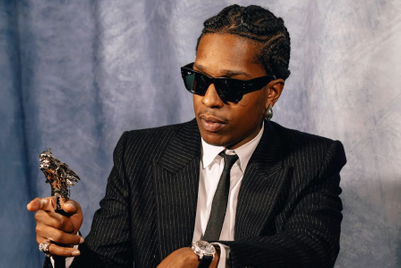
When Uniplan’s executive producer Shirley Shantel reminisces about her early days working for luxury brands in China, she can’t help but express a sense of disbelief. “For a lot of brands like Prada, we used to do special made-to-order products. You had to be invited to have the catalogue put in front of you [to order] X amount of different bags.”
Such a scenario isn’t exactly rare now either, but these days it is certainly less viable. Chinese consumers made up one-third of global luxury spending in 2016; hence the key for luxury brands is now reach rather than exclusivity.
“We used to think the idea of being luxurious [means] ‘I don’t have to squeeze in with another 300 people’. It’s really not possible in China,” says Shantel. “There isn’t any event that allows a brand to capture 5% of the population within a city, much less the country. Digital allows us to have a much wider presence.”
For that, livestreaming provides an instant remedy and presumably amplified results. Jaguar’s car chase stunts at the Bird’s Nest Stadium for the launch of its F-Pace and E-Pace models last August registered more than 20 million online views across multiple platforms in addition to a live audience of 350. Such demands mean event agencies are changing their scope of work from the traditional tasks of setting up sites, to concentrate on curating the event for broadcast. “The broadcast audience got a much better deal because we used drones [and] GoPros attached to the cars,” she says.

As it is, Joe Wong, general manager of integrated marketing services for Greater China at George P. Johnson says launch events for luxury brands are increasingly becoming experiential events. Mercedes-Benz and Infiniti, for example, are known for carrying out their launches with Cirque
du Soleil performances.
Yet there are also cases where less is more, says Andrea Barcaro, creative director at Uniplan. He points to the example of Polestar’s global media launch at the Yuz Museum on The Bund featuring minimalistic titanium-based designs.
“Some brands don’t create too [many] additions on top of their message, just a very classy, high-quality space,” he says.
Digital experiences
When it comes to digital integration with luxury events, brands are under pressure to create a seamless O2O experience as Chinese youth are very digitally savvy, says Charmaine Lin, GM of client services, Reuter Communications. A seamless O2O experience facilitates ecommerce and incorporates digital gamification elements such as Chanel’s Coco Game Center digital arcades to keep event audiences engaged. “In Asia, gamification is still rising, even among more traditional brands,” she says.
All this means that what constitutes luxury is changing in the digital and social media age. “It has become much more important that we create Instagrammable spaces, areas for audiences to post and crop, or to project content on a wall to allow people to take selfies to communicate brand messages and information about the event,” says Uniplan’s Barcaro.
Going high culture
Luxury Makers by Auditoire undertook such a brief to produce video mapping on fabrics for Dior’s Toile de Jouy collection during the reopening of its flagship store
in Shanghai in late 2017.
Antoine Gouin, managing director of Auditoire says the desire for luxury goods falls back on aspiration for high culture. In other words, Chinese luxury clients are keen to learn about the heritage of the brands. “Especially in a country like China where people are craving cultural experiences, cultural discoveries. China is a content-savvy country, they don’t really care how it looks, they like stories more than anything else,” he says. “Luxury brands have to tell the right stories, to engage
them into your cultural consciousness.”
Meanwhile, current trends show that pop-up stores have been the modus operandi of many brands, Gouin believes that location, naturally, is key for luxury brands to attract a well-heeled audience.
However, even the best location will not matter if the overall setup of the pop-up store lacks imagination. “If you are just there to present a store without any storytelling, it’s going to be just another store. You need a creative concept and
also a crossover concept,” says Gouin.
For example, Korean eyewear brand Gentle Monster ran a gallery of avant garde art at its pop-up store in Shanghai recently. Gouin says it was a fresh retail concept that attracted the young and trendy.

Localised luxury
Another emerging trend among sophisticated mainland clients is their gravitation toward local designers and growing pride in local labels. While few of these could afford splashy events, they make up for it through unique experiences.
Local brands such as by FANG deliver a different kind of experience to clients such as access to its couture workshops. “It’s an unmarked villa at the back of a lane”, Gouin explains. “Once you get there, you enter the world of fashion and design set in a very privileged environment.”
Such an approach of course, ultimately, means that the exclusivity of luxury is coming full circle, where those privileged enough to be in the know can acquire special access. Digital developments won’t be able to change that overnight.




.jpg&h=334&w=500&q=100&v=20250320&c=1)
.jpg&h=334&w=500&q=100&v=20250320&c=1)



.jpg&h=334&w=500&q=100&v=20250320&c=1)
.png&h=334&w=500&q=100&v=20250320&c=1)



.png&h=268&w=401&q=100&v=20250320&c=1)

.jpg&h=268&w=401&q=100&v=20250320&c=1)


